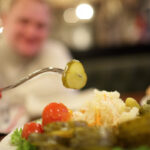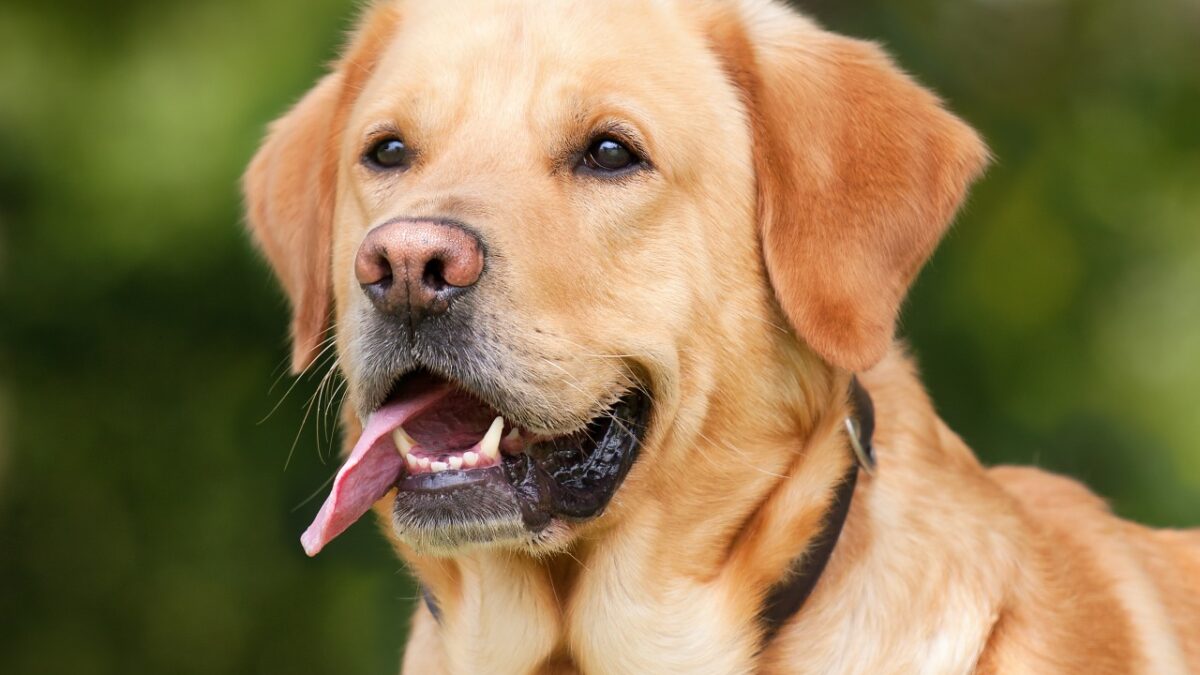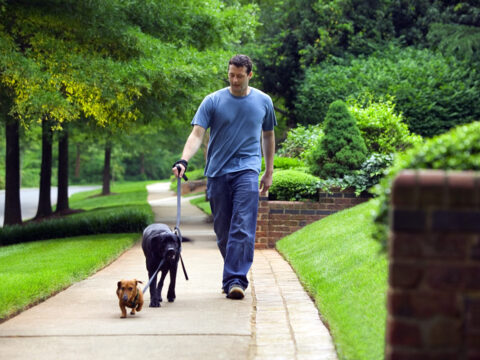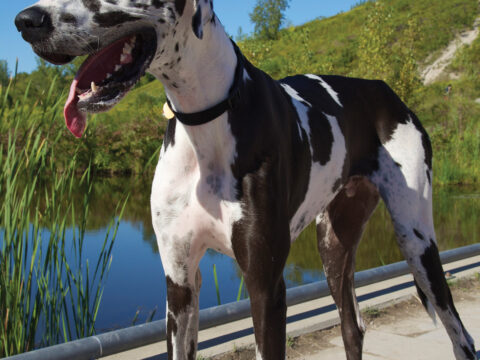
Transform your space with unexpected color

Condiment creativity turns good meals into great ones
If you love your dog like a true member of your family, you want to give him the absolute best. So when your furry friend seems to have a lackluster coat and flaky, itchy skin, you’re bound to feel concerned. It’s time to take a proactive approach so your dog can be healthy – both inside and out – for many years to come.
“Skin and coat issues are some of the most common problems that pet parents face,” says pet expert Tracie Hotchner, host of award winning NPR radio show DOG TALK (and Kitties, Too!), and author of The Dog Bible: Everything Your Dog Wants You to Know. “These issues are also frequently an indicator of your pet’s overall health. The best approach is a proactive one where you establish a care routine that both you and your dog enjoy.”
To keep your pet’s coat and skin dog-show perfect, follow these simple tips:
1. Brush regularly with the right brush
While pet parents have the best intentions, many of them do not brush their dog as often as they should. Hotchner says that most dogs need to be brushed two to three times a week with the right tools to promote healthy shedding and follicle stimulation for future fur growth. There are a variety of brush styles appropriate for medium or long-haired dogs, but if you have a short haired one, that doesn’t mean you get to bypass brushing responsibilities. For short haired breeds, use a curry comb made from rubber – each nub will help deeply massage skin while grabbing loose fur. Avoid curry combs made of plastic as they will scratch your dog’s skin and can cause severe irritation.
While pet parents have the best intentions, many of them do not brush their dog as often as they should. Hotchner says that most dogs need to be brushed two to three times a week with the right tools to promote healthy shedding and follicle stimulation for future fur growth. There are a variety of brush styles appropriate for medium or long-haired dogs, but if you have a short haired one, that doesn’t mean you get to bypass brushing responsibilities. For short haired breeds, use a curry comb made from rubber – each nub will help deeply massage skin while grabbing loose fur. Avoid curry combs made of plastic as they will scratch your dog’s skin and can cause severe irritation.
2. Say yes to supplements
Sure you already give your dog high-quality, meat-based foods that offer good nutritional value, but did you know that even the best natural or raw foods are still lacking in some essential nutrients? Dog foods typically have low levels of omega-3 essential fatty acids which are considered essential because they are required for optimal health but cannot be produced by the human or canine body, and therefore, must be consumed through diet or supplementation. Why should you be concerned? Omega-3s reside in the cell membranes, where they impact many biological processes in your pet’s body. Without adequate intake of these essential fats, cells may not function properly, and overall health is compromised.
Sure you already give your dog high-quality, meat-based foods that offer good nutritional value, but did you know that even the best natural or raw foods are still lacking in some essential nutrients? Dog foods typically have low levels of omega-3 essential fatty acids which are considered essential because they are required for optimal health but cannot be produced by the human or canine body, and therefore, must be consumed through diet or supplementation. Why should you be concerned? Omega-3s reside in the cell membranes, where they impact many biological processes in your pet’s body. Without adequate intake of these essential fats, cells may not function properly, and overall health is compromised.
“Supplementing with a high quality omega-3 fish oil supplement will help your pet maintain healthy skin and coat, as well as a healthy heart and joints. I recommend Nordic Naturals Pet Collection, which includes a variety of fish oil supplements that have been specifically formulated for both dogs and cats.”
3. Bathe the correct way
Bathing your dog might seem like a simple task, but there is a right and wrong way to do it. Hotchner says to always use shampoo especially formulated for canines. Human shampoo does not have the right pH balance and can make skin problems worse. Work up a rich lather and rinse thoroughly. Next, consider massaging a conditioner over your pet’s coat that contains ingredients like vitamin E, chamomile, oat protein or sunflower oils. After allowing to sit for a couple minutes rinse thoroughly again. Your dog’s coat will be clean and shiny, and he’ll smell wonderful. Do this once a week – more if your dog gets dirty, less if directed by your vet.
Bathing your dog might seem like a simple task, but there is a right and wrong way to do it. Hotchner says to always use shampoo especially formulated for canines. Human shampoo does not have the right pH balance and can make skin problems worse. Work up a rich lather and rinse thoroughly. Next, consider massaging a conditioner over your pet’s coat that contains ingredients like vitamin E, chamomile, oat protein or sunflower oils. After allowing to sit for a couple minutes rinse thoroughly again. Your dog’s coat will be clean and shiny, and he’ll smell wonderful. Do this once a week – more if your dog gets dirty, less if directed by your vet.
4. Keep pet pals hydrated
Hydration is imperative for healthy skin and a gleaming coat. Providing water may seem like a given, but in reality dogs can become dehydrated very quickly, especially during the warm weather months. Make sure Fido’s dish is always full of water so he can drink when needed. Hotchner adds, “Whether you’re driving across town or across the country, when you travel, always pack a jug of water and a small container to pour water in for your pet during rest stops. You never want to assume your destination will have a water source. If you have space, a small cooler filled with ice can be a tasty, hydrating treat for your puppy too.”
Hydration is imperative for healthy skin and a gleaming coat. Providing water may seem like a given, but in reality dogs can become dehydrated very quickly, especially during the warm weather months. Make sure Fido’s dish is always full of water so he can drink when needed. Hotchner adds, “Whether you’re driving across town or across the country, when you travel, always pack a jug of water and a small container to pour water in for your pet during rest stops. You never want to assume your destination will have a water source. If you have space, a small cooler filled with ice can be a tasty, hydrating treat for your puppy too.”
—(ARA)




